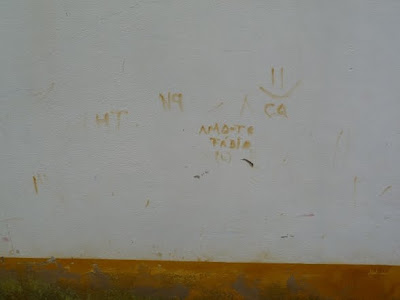Saturday morning we began our tour of Lisbon with a visit to the Calouste Gulbenkian Museum. Gulbenkian was an Armenian oil-man (sic; not oil-person; I know this from doing 13 years in Dallas) whom the Portuguese gave political asylum in 1942. He left his billions to Lisbon, when he died in 1955, to create a museum for his collection and to continue his practice of tithing 10% to art. The museum is comparable in many ways to the Burrell Collection in Glasgow: the tastes and interests of one man, eclectric in every way, beautifully displayed in a purpose-built structure that is itself of interest, etc. Its impressive Asia Minor collection--Gulbenkian's homeland--is something the Burrell does not have, particularly its Muslim art. We had a nice lunch, with the seasonal squash soup, and then moved on....
 |
Entrance to the Gulbenkian |
 |
Muslim decorative tiles |
 |
The museum is in a park-like area, but smack in the city |
 |
15th century Muslim lamp |
 |
Like the Burrell, in the Gulbenkian you look out the windows, here from Chinese (Ming and Qing) gallery, and see a garden |
 |
A Medieval traveling altar; obviously a wealthy merchant or clergy |
 |
I am keeping my beard trimmed short these days so as not to look like Rembrandt's old man |
 |
A Turner; yes! |
 |
Madame Monet, painted by Renoir (or maybe it was Madame Renoir...) |
 |
And a Sargeant |
 |
And a whole gallery of Lalique, who was really into snakes |
 |
The very famous Lalique dragon fly |
 |
But he was really into snakes |









































